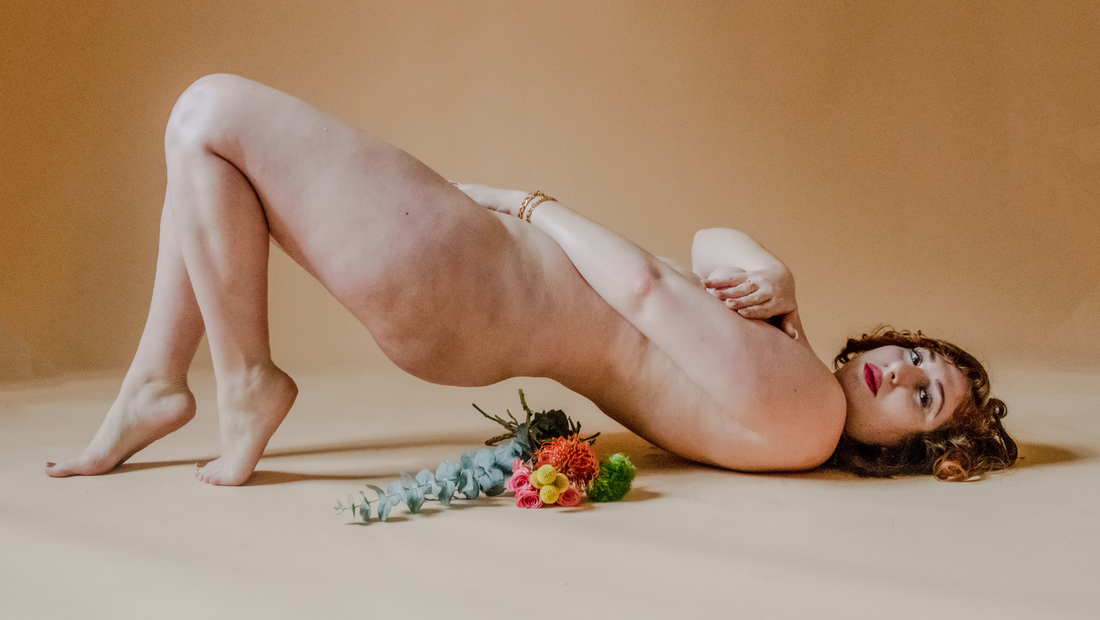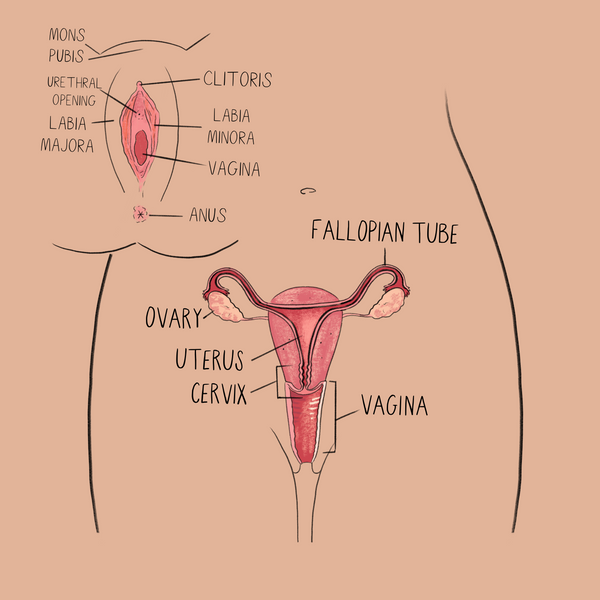Momotaro Apotheca and its materials are not intended to treat, diagnose, cure or prevent any disease. All material on Momotaro Apotheca is provided for educational purposes only. Always seek the advice of your physician or other qualified healthcare provider for any questions you have regarding a medical condition.

The Difference Between Your Vulva & Vagina
Share
There’s a lot of misinformation out there when it comes to sex education, and oftentimes disinformation or even scare tactics that keep us from truly understanding our body parts and their specific functions. As we begin to recognize the lack of information about our own bodies and the consequences it has, we should begin to increase our focus on our biology and the language we use to describe it. Putting in time to educate ourselves helps us understand what we’re dealing with, and can help us take healthy measures to prevent and treat issues that you may encounter.
Whether you were raised in a conservative household, attended a religious school, or slept through your mandatory sex-ed class in middle school, we’ve got you (un)covered. Read through our crash course on sexual anatomy for vulvar and vaginal health.
Knowing the specific & correct terms for body parts helps you express yourself to your partners & healthcare providers, granting you sole authority over your body & its needs.
There’s a lot to explore between the folds, so grab a mirror, wash your hands, and learn your parts and their proper names. Knowing the specific and correct terms for body parts helps you express yourself to your partners and healthcare providers, granting you sole authority over your body and its needs.
We know learning and caring for your sexual health can feel overwhelming and unnecessary (especially during global health crises), but it’s worth taking the time to learn about your body and the various issues you may encounter. As the adage goes, knowledge is power and knowing the proper terms and functions of your body parts is empowering.
Before we dive in, we have an important message for anyone with a vulva
First off, let’s make it clear that your vulva — yes, your size, your shape, and your color — is normal and it goes through natural changes from puberty to menopause and beyond that are, again, normal. No two vulvas look the same (so comparing yours to your partners’, your friends’, or the people in porn isn’t constructive), but they are composed of the same parts.
While vagina has surfaced as the blanket term of choice for our genitalia, it's regularly misused. If you're referring to any of the external parts between your legs Vulva is actually the correct term.
Using vulva and vagina interchangeably isn’t just a linguistic misstep. When you can't decipher the difference between your genitalia, it makes it difficult to explain what you're experiencing — whether that's pain at the OB/GYN or pleasure in the bedroom.
Read More: How to Prepare for Your OB/GYN Appointment Like An OB/GYN
Okay, so what's the difference between my vulva & vagina?
The vulva includes all of the external parts of the anatomy. This includes the mons pubis (pubic mound), the labia majora and minora, the clitoris (aka the pleasure center), the urethra (where you pee), and the vagina.
The vagina itself is the pathway to the cervix and connects the uterus to the vulva. It is the muscular canal through which uterine lining is released during menstruation, babies can be born, and tampons (or a menstrual cup), fingers, and other vaginal-safe sex toys enter and exit.

Understanding Your Vaginal Microbiome
Composed of several different layers of tissue, the vagina is both the barrier and access route between the cervix and the outside world. The surface layers are made of mucosal tissue, similar to your other mucous membranes lining the mouth, nose, and digestive tract. This layer is host to a dynamic ecosystem of microorganisms known as a “microbiome” with an acidic pH level that play a key role in keeping your vagina healthy — and you happy!
Promote a healthy gut and vaginal microbiome: Shop The Probiotic
A healthy pH is anywhere between 3.8 and 4.5. An acidic vaginal environment creates a protective barrier that prevents your vagina from overproducing too much unhealthy bacteria, which can lead to fungal and bacterial infections, strong or unusual odors, excessive discharge, or general irritation from sex, clothing, or exercise.
When your pH is thrown off balance, the bad bacteria crowds out the good bacteria, weakening this protective barrier and your body’s natural safeguards against infection and sexually transmitted infections (STIs).
These infections and irritations can be caused by a number of things including changes in your diet, excessive sugar or alcohol consumption, medications, improper toy cleaning, different sexual partners, stress, lack of sleep, and detergents, lubes, douches, or other “vaginal care” products that use artificial dyes, fragrances, and parabens.
It’s great if you’re able to pinpoint the cause of your vulvar or vaginal issues, but if you’re experiencing prolonged or excessive symptoms, we urge you to see a medical professional and of course, get regularly tested for STIs.
READ MORE The Difference Between A Yeast Infection, BV, and UTIs
How can I keep my vulva & vagina happy & healthy?
Drink water. Hydration, as you know, is extremely important for literally every bodily function.
Use natural and organic products on your vulva and in your vagina whenever possible. If you can’t find or afford them, it’s best to forgo these items and let your body heal itself.
Soothe vulvovaginal irritation and discomfort naturally: Shop Salve
Wear breathable cotton panties. It’s not necessary to completely forgo lacy lingerie or spandex, but a thong a day will not keep a yeast infection away.
Loose fitting clothing is your friend. Again, not necessary to wear culottes or a skirt everyday, but it’s best to let your vulva breath whenever possible to avoid future or further irritation.
Take off gym clothes and swimsuits as soon as possible! The excess moisture is a breeding ground for bad bacteria.
Pee after masturbation or partnered sex in any capacity. This helps to literally “flush” bacteria out to help prevent UTIs and other vulvar infections.
Sleep naked. Or just forgo bottoms or underwear to let your vulva breathe.
How can I avoid irritation & infection?
DON’T douche. Douching is only a temporary fix to cover up symptoms stemming from underlying issues.
DON’T consume excessive amounts of sugar or alcohol. Too much of anything is a bad thing, but sugar and alcohol are breeding grounds for bad bacteria and yeast. We know this one can be challenging.
Read More: What Causes Vaginal Infections?
DON’T masturbate with foreign objects. Only insert toys specifically designed for vaginal penetration. Fruits and veggies are only your friends when they go in your mouth, okay?
DON’T shame someone else or be ashamed of your vulva or sexuality. Every body is different.
Not sure what you need? Take our quick quiz for personalized product recommendations. Take the quiz.
Related Reading
How Each Phase of The Menstrual Cycle Affects Immunity
What the Color of Your Period Blood Tells You About Your Health
What's In a Name? The Etymology of the Vagina
What's the Difference Between a UTI, Yeast Infection, and Bacterial Vaginosis?
Why Does My Vagina Smell Like That?

